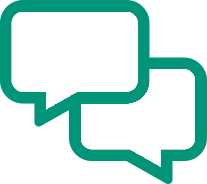Here’s the cold hard truth: as much as we all want to go paperless for all the right reasons—remove clutter, simplify data storage, reduce inefficiencies and errors, and save the environment—paper isn’t going away anytime soon in government.
You might be thinking: “But wait… MCCi is a leader in digital transformations! How can you say this?” The reason is simple: We have not reached digital equity as a society.
In an era of smartphones with more computing power than desktop computers from just 20 years ago and gigabyte data plans from all the cellular carriers, it’s easy to think that everyone is connected and comfortable with the digital world. While the digital divide has been steadily decreasing, we must remember that our offices, workspaces, and staff do not reflect the average household.
What is Digital Equity?
The term digital equity covers several aspects of computers, the internet, and our relationship with them:
- Availability of affordable high-speed internet access
- Consistent access to a computer that can run current software versions, web browsers, etc.
- Access to assistive technologies (screen readers, motion trackers, electronic braille displays, speech input tools) for people with special needs
- Comfort in using computers and software in general
- “Digital literacy”—understanding how to navigate the web and keep digital data secure
To illustrate some of the challenges for any agency wanting to go paperless, let’s look at a few statistics from the Pew Research Center.
20%
of citizens in rural areas still do not have high-speed internet access at home.
38%
of disabled Americans do not own a computer, and 28% do not have broadband internet access.
25%
of senior adults (65+) say they never use the internet.
Rural residents are less likely to own a laptop or tablet.
Black and Hispanic families are less likely to own a laptop or desktop computer.
Keep in mind that these numbers are way up compared to just ten years ago. Reaching digital equity and digital inclusion requires a concerted and consistent effort.
Digital equity goals must be set, reached, and then reset and reached again. Repeat. The reason for this is twofold. (1) Technology is constantly changing. As society adapts to new technology, the most vulnerable members of our communities will always be in danger of being left behind. (2) All of us are always learning. There will always be a need for another digital literacy class.
Can Your Agency Create a Paperless Future?
The Federal Office of Management and Budget (OMB) has decreed that federal agencies must be all-digital by December 31, 2022, and that NARA (National Archives) will stop accepting paper files. This push for paperless on the Federal level is necessary to consider that completing, processing, and storing paperwork costs the federal government nearly $39 billion yearly. There are better ways to spend that money, including projects and incentives that improve access to technology and provide education and training on computers and other digital devices.
Where to Get Started?
Citizens most burdened with filling out paper forms are those with the least resources: VA benefits and public health services recipients. These citizens need your assistance NOW—and sometimes it is a matter of life and death—but paper-based processes are SLOW and error-prone. Focusing on these two populations can speed up customer service and potentially improve outcomes for at-risk people, enhancing VA and public health system efficiency and productivity while enjoying overall cost savings.
The 21st Century Integrated Digital Experience Act (21st Century IDEA) focuses on tools that any agency can implement to significantly reduce the volume of paper used in its day-to-day business. These initiatives include tools like digital signatures, Laserfiche electronic forms, and improved websites that provide information portals and easy ways to request information.
How to Get Started?
In a previous post, we explained how agencies could use Intelligent Document Processing (IDP) to convert physical documents (paper, microfiche, and microfilm) into integrated, smart data. IDP relies on modern computing power and technologies that were a pipe dream just a few years ago, such as computer vision, artificial intelligence (AI), natural language processing (NLP), advanced pattern matching, and machine learning.
Yes, we believe the concept of a paperless government to be a myth, but the paper doesn’t need to slow your digital transformation. IDP, with solutions like Laserfiche, can automate data extraction from documents and remove the manual burden of paper processes.






